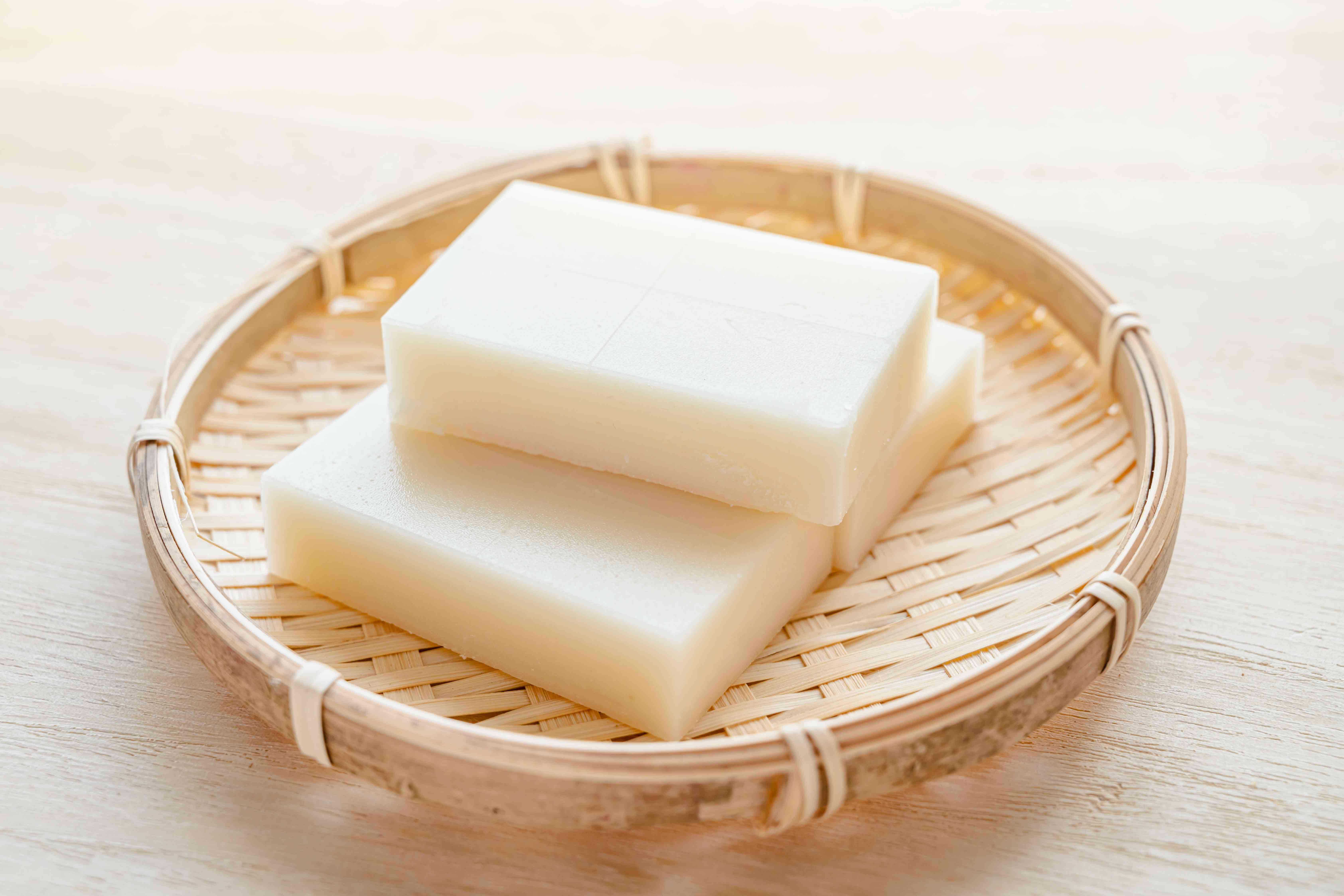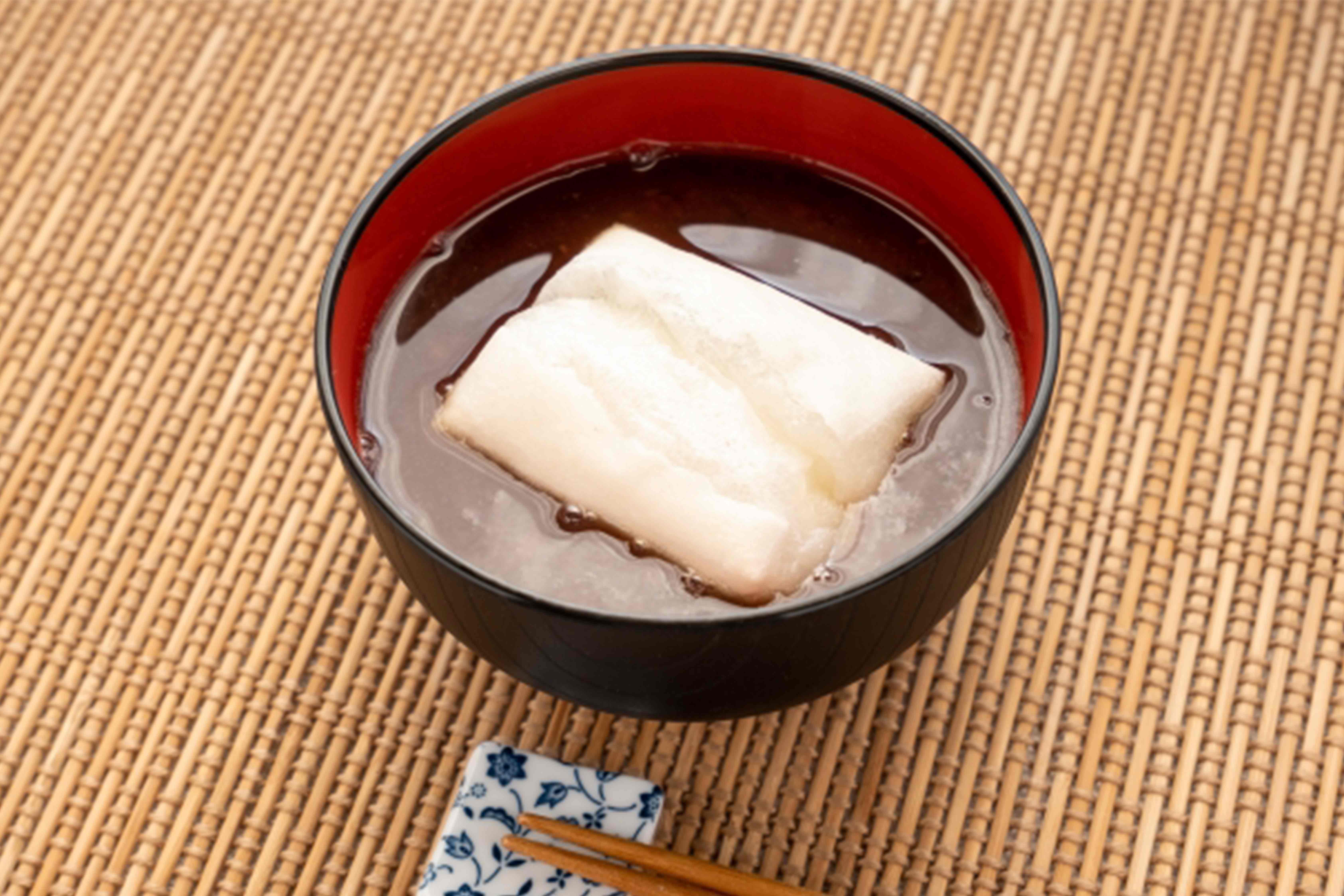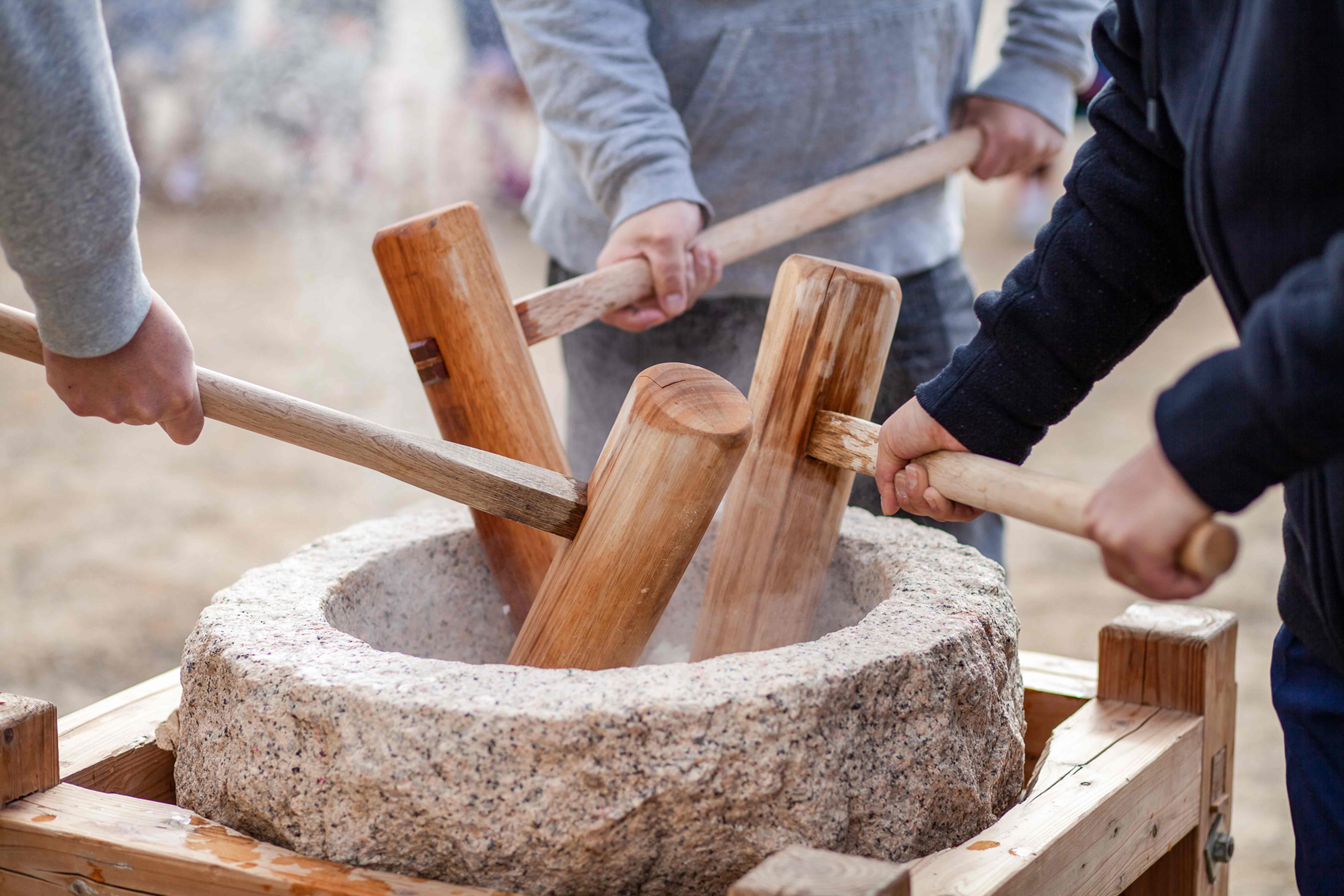Each country / region of the world has its own staple food. In general, rice, wheat, and potatoes would be the main ones. What is very interesting is still the way each ingredient is prepared. Particularly, all the ways of cooking the kind of rice and wheat is really interesting. Peel the skin off of those fine berries (or seeds) and extract the contents, and steam or boil them as they are. Alternatively, the contents of the berries are powdered and kneaded in water, then shredded, torn or rolled up, and then steamed, boiled, baked or dried… How could our predecessors think about such things…? Can’t we somehow make this obscure berries of seeds?-like thing taste better… Hmm… We’re going to eat this stuff GOOD, no matter what! Did they think of such things? Isn’t it very exciting to imagine such a thing?
The basic cooking way of “Rice” is like “cooking”, “steaming”, or “boiling”, isn’t it? We’re not sure if it’s after our predecessors had figured out this basic cooking way or in the process of figuring out this way… Probably, at one time, someone very clever? tried like this way.
“Let’s grind up some steamed rice~♪”
→The result is a “O-Mochi (Rice Cake)”… v( ̄▽ ̄;)/~
We think it’s really something like this.

Now, there are two main types of “O-Mochi”. They are called “Tsuki-Mochi” and “Neri-Mochi”, respectively. “Tsuki-Mochi” is made by pounding steamed rice with a pestle, and “Neri-Mochi” is made by kneading rice into a powdered form with hot water and steaming it. (The so-called “Dango (dumplings)” is a type of “Neri-Mochi”) Incidentally, Japanese “O-Mochi” does not use ordinary “Rice” but a particularly sticky kind (called “Mochi-Rice”). In Japanese culture, “O-Mochi” has often been treated as one of the fortunate ingredients. In Japanese rituals, “O-Mochi” is often used as an offering (particularly called “Sinsen”) for God, and the event of making “O-Mochi”, the so-called “Mochi-Tsuki” itself, is included as important part of the ritual. The “Kagami-mochi” found in the Japanese New Year is a good example for that. As mentioned above, “Rice” was a valuable food in Japan. It was truly “wealth” itself, right? Since each “Rice” is small, our ancestors may have considered that by making it into a big kind of lump, they would appreciate it even more.
Well… Although we’ve talked about a lot of things above, “O-Mochi” is a popular food among the Japanese today. It seems to be quite popular with people abroad as well. “O-Mochi” is often used as an ingredient in sweets, so you can enjoy it in many ways. Oh, be careful not to choke on it. If not careful, “O-Mochi” can be a so dangerous Japanese food.
Kagami-mochi
In Japan, during the year-end and New Year holidays (usually from December 28 to January 11), round rice cakes are displayed in the “Tokonoma (alcove)” as an offering to the “Toshi-Gami” (also known as the god of grain). This round rice cake resembles an ancient mirror (in the shape of a circle). “Kagami-mochi (“Kagami” means “mirror” in English)” is said to be both an offering to the god and the special place for “Toshi-Gami” to reside during the New Year’s holidays. (In other words, “Kagami-mochi” itself is treated as a substitute for the god.) The basic style of “Kagami-mochi” is two round rice cakes of different sizes stacked on top of each other with an “Daidai (one kind of Japanese tangerine oranges)” on top. After the New Year, we lower the “Kagami-mochi” from the “Tokonoma” or the place where it was displayed and use a mallet to make it smaller before cooking it. This event is called “Kagami-biraki” and is a kind of ritual. By eating “Kagami-mochi” that has been offered to the “Toshi-Gami”, or that has been enshrined by the god, we are grateful to share the power of the god and give thanks to. Due to the customs of samurai society, the use of knives is sometimes avoided in this “Kagami-biraki”. This is because it is associated with “seppuku,” which is not a good omen for a samurai, you may know. In addition, it is said that it is bad luck to use words like “split”, “divide” or “cut”, so the word “open” is used instead. This is because the word “open” is considered to be an auspicious word that means “luck and fate will improve in the future”.
Japanese idioms “Yaki-mochi”
One of the Japanese idioms to express “envy” or “jealousy” is “Yaki-mochi-wo-yaku”. The literal translation of the word “Yaki-mochi-wo-yaku” in English is “Grill a rice cake”. When you’re jealous of someone, you puff out your cheeks, right? It looks like a rice cake that expands when it is grilled, that’s how it came about. There is also a term “Yaki-mochi-yaki”, which refers to people who are easily jealous or envious. In some cases, “jealousy” itself is called “Yaki-mochi”. Whenever you get jealous of someone or something, your head gets all hot and bothered. In Japanese, the word for “jealousy” and the word for “Grill (or bake)” are read the same way “yaku”. It also includes sound word play~ It’s an excellent way of putting it, don’t you think?
Typical Mochi Cuisine / Mochi Sweets

O-Zouni (Mochi-soup)
It is a soup dish with grilled rice cakes. In Japan, it’s often eaten, especially during the New Year. Since it is a well-known dish, there are many variations in each region and each family. And many of them are also well known as local dishes.
O-Shiruko
A dish in which rice cakes (or grilled rice cakes) are placed in a soup made by boiling red beans with sugar. Shiratama dumplings and sweetened chestnuts are also often used instead of mochi. One of the most popular and classic Wa-Sweets! In the Kansai region, those made with “koshi-an” are called “O-Shiruko”, while those made with “tsubu-an” are called “Zenzai” under different names. Like “Botamochi”, which will be mentioned later, it has been popular as one of the “Cuisines to treat others” because of its easy cooking method.
Botamochi
It is one of mochi sweets made by pounding rice until some of the rice grains remain, and then wrapping it in “tsubu-an”. It is said to have been named after its looks, which resembles “Botan (a peony flower)”. When making Botamochi, we often use a mixture of glutinous rice (“Mochi-rice”) and Uruchi-rice, or just one of the two. Since it is easy for ordinary households to make, it has been popular in common as a “Cuisines to treat others”, when they receive some kind of help from the local residents, such as for “rice planting” or ceremonies and rituals for weddings and funerals. It was also often used as an offering to the gods. There is a Japanese proverb that says “Tana-kara-Botamochi (Botamochi on a shelf)”. It is a proverb meaning “unexpected good fortune coming our way”. The English saying may be “pennies from heaven”, isn’t it? This Japanese proverb is now mostly used as an abbreviation for “Tanabota”. It is quite rare for an abbreviated proverb like “Tanabota” to be widely used. It is said that this is one of the results of “Botamochi” being widely popular among the common people.
O-Hagi
“O-Hagi” is one of mochi sweets that is almost the same as “Botamochi” in terms of how it is made and its shape. There are many theories about the origin of the name “O-Hagi”… All of them are very interesting and probably all of them are correct. The most common theory is that “O-Hagi” resembles a cluster of “Hagi (bush clovers)”. Botan flower are usually seen in spring, while hagi is known as an autumn flower in Japan. In this country, there are calendar days called “Higan” in spring and autumn, and many ceremonies and rituals are held to comfort the spirits of ancestors. In common, this is the time of year when people visit graves, and these mochi sweets were often made as offerings for those occasions. Based on that, probably someone all over the country started saying “Isn’t it strange to call it “Botamochi” in autumn? And then…” Don’t you think it’s a rather likely story?
Hishi-Mochi
A rhombus-shaped mochi sweets that is served with Hina-dolls on the occasion of so-called “Hina-Matsuri (Girls’ Festival)”, that is held on March 3rd. “Hishi-Mochi” in three colors (peach, white, and green) is the most commonly known, but there are also variations in two colors, five colors, and seven colors. Originally, it is just an offering, but it is OK to eat. There are even edible ones available on the market.
KouHaku-Mochi (Red and White Mochi)
It is made as an offering to the gods on the occasion of a happy or festive event, or as a “gift” for those who participate in the ceremony or ritual. In Japan, “red and white” is considered as a good omen, right? “Kuchinashi (Gardenia fruit)” is often used to color the mochi red. Kuchinashi berries were well known for their detoxifying properties, so it is thought that the red mochi colored with Kuchinashi berries were meant as a “prayer for health”.
Daifuku-Mochi (Daifuku)
This is a very popular mochi sweets made by wrapping red bean paste in rice cake. The kanji word “Daifuku” means “great fortune” in Japanese. There are various types of paste, red bean paste (koshi-an / tsubu-an), chestnut-an, sweet potato-an, etc., which are wrapped around the rice cake. Today, there are many upgraded or mysteriously modified versions of them. We highly recommend “Strawberry-Daifuku,” “Mame-Daifuku” and “Kusa-Daifuku”.
Sakura-Mochi
“Sakura-Mochi” is one of mochi sweets named after “Sakura (cherry blossoms)”, Japan’s most popular spring flowers. It was invented around the middle of the Edo period (1600s). As a matter of fact, the making way and its looks and shape differs between the Kanto and Kansai regions. In Kanto region, it is made by kneading shiratama flour, mochi flour, or joshin flour into a thin skin, then wrapping azuki bean paste (koshi-an) around it and wrapping it with salted sakura leaves. The thin skin that surrounds the red bean paste does not necessarily need to be colored. This type of “Sakura-Mochi” is commonly called “Chomeiji”. In other hand, “Sakura-Mochi” made in Kansai region is often called “Domyoji”. It is made by wrapping azuki bean paste (koshi-an) in steamed and roughly pounded glutinous rice (also called “Domyoji flour”) and then wrapping it with salted cherry leaves. This type is usually need to be colored light red.
Kashiwa-Mochi
This is one of mochi sweets made as an offering for the “Tango Festival (May 5th)”. “Tango Festival” is a day to celebrate the growth of children. It is made by wrapping azuki bean paste in a rice cake and then wrapping it in “Kashiwa (oak) leaves”. The reason why oak leaves are used is because the oak’s old leaves do not fall off until the new leaves grow in, that is said to be a good omen for family prosperity or prosperity of descendants.
Chimaki
Dumplings made of “Mochi-rice (glutinous rice)” or Uruchi-rice are wrapped in bamboo leaves and steamed. It is known as an offering for the “Tango Festival”. In modern times, 5/05 is considered as “The day for children”, so the custom of eating this “Chimaki” was commonly to pray for the health and growth of children. These dumplings may be sweetened with sugar or other ingredients.
Gohei-Mochi
Rice cakes made from Uruchi-rice are inserted into wooden sticks and flattened, then coated with sweet and spicy miso and baked. It is said that it was named after the shape of the “Gohei”, that is offered before the gods in Shinto rituals. It is one of the typical local dishes in the Chubu region (the inland region of Honshu). It’s delicious~♪
Kudzu-Mochi
It is a kind of rice sweets made by kneading “Kudzu flour” with water. “Kudzu” is one of the Japanese plants. However, the original way to make “Kudzu-Mochi” is by steaming lactic acid fermented starchy wheat flour. Nowadays, kudzu flour is very expensive, so most of the products are made from potato starch. The taste and texture are quite different when compare-tasting them. “Kudzu-Mochi is eaten with “Kinako (soybean flour)” or “Kuromitsu (Japanese molasses)”.
Warabi-Mochi
One of rice sweets made by kneading starchy powder from “Warabi” with water. “Warabi” is one of the Japan’s wild vegetables. “Warabi-Mochi is eaten with “Kinako”, “Macha flour” or “Kuromitsu”. As with “Kudzu-Mochi”, there are records that it was made in the late 800s, so it is actually one of the oldest mochi sweets. As you can imagine, it was a very expensive sweets. Nowadays, many of them are made from starch of other ingredients.
○○-MochiⅠ
These are made from grains that have been boiled or steamed, and pounded or kneaded into kind of rice cakes. It is said that our ancestors tried to make all kinds of grains into rice cakes.
○○-MochiⅡ
Our ancestors in Japan used to extract the starch if it was extractable and make it into rice cakes… We should really admire their persistence and passion.




_op.png)
_001.png)
_002.png)
_003.png)
_004.png)
_005.png)
_006.png)
_007.png)
_008.png)
